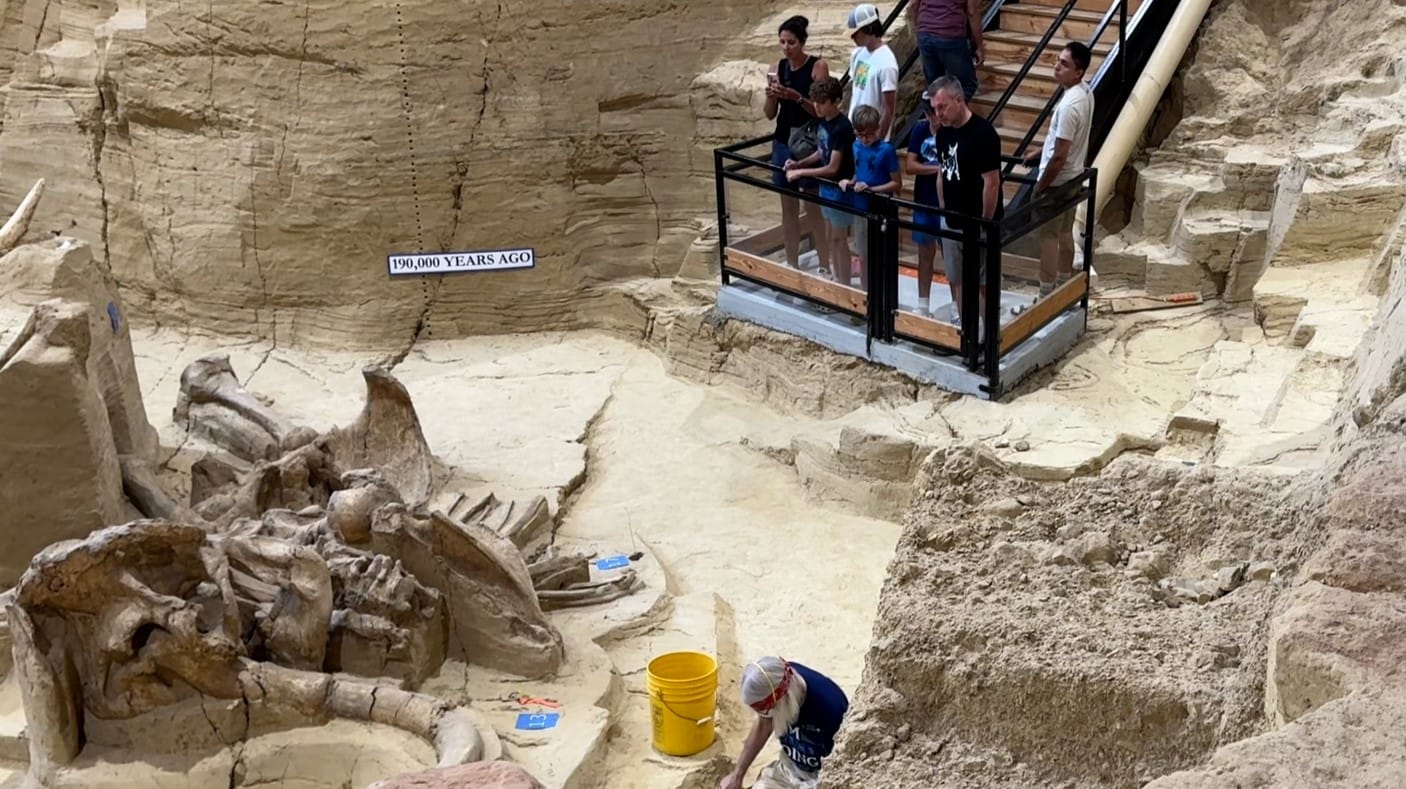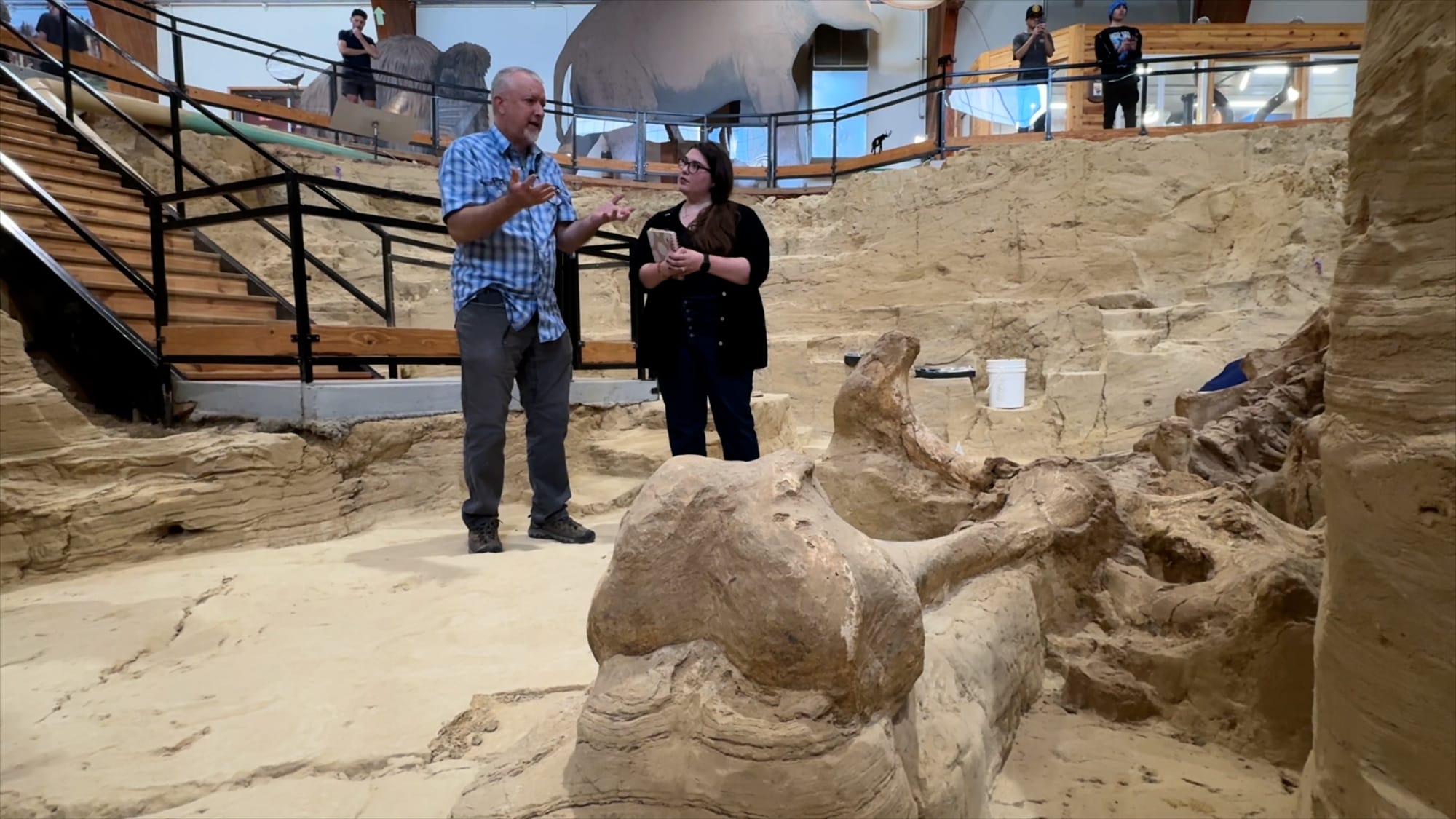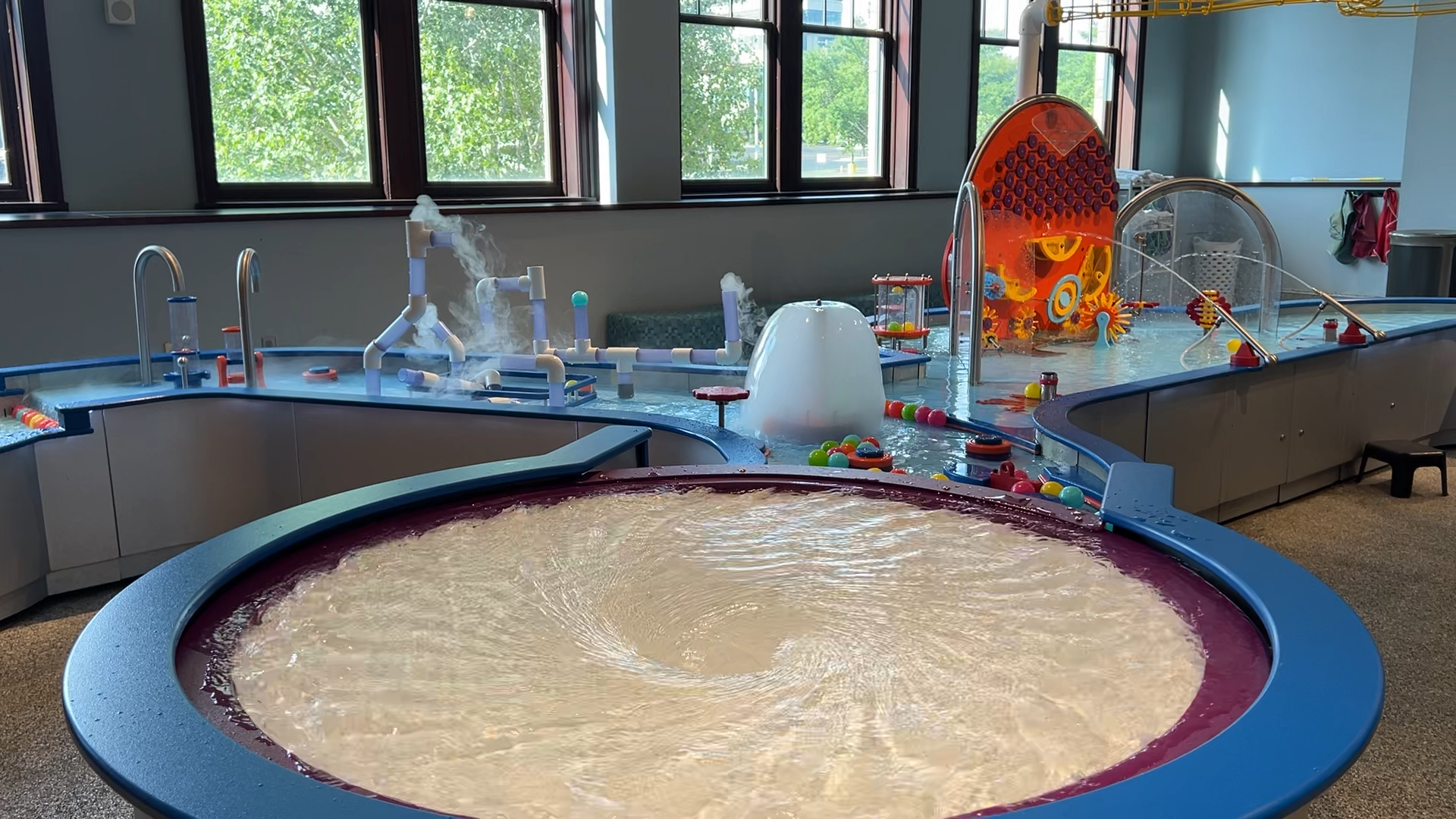
Jackie Hendry, South Dakota News Watch
HOT SPRINGS, S.D. – Family vacations with school-aged children are a time for fun and increasingly a time for learning.
Most tourist attractions have always offered some kind of cultural or historical education opportunities. But there is an emerging appetite to engage with science and research at a deeper level. Some sites hope to capitalize on that attention and inspire the next generation of South Dakota’s science, technology, engineering and math (STEM) workforce.
One of the first examples in the state was unearthed 50 years ago.
In 1974, heavy machine operators leveling land for a Hot Springs housing development uncovered a 7-foot tusk. Further excavation found an unprecedented number of mammoth fossils. The landowner, Phil Anderson, donated the property to create the Mammoth Site.
The active research location is enclosed in a visitor center, which is also home to a museum and a variety of educational programs.
“If the site in ’74 had been done like a lot of traditional paleo digs, they probably would have come in, removed everything, and the construction project would have continued,” said Chris Jass, lead researcher at the Mammoth Site. “Here, because we have the building, we can take our time. And as new analytical techniques come along, as new methods of understanding the past come along, we can actually apply those to the site.”
For example, researchers initially believed the site to be about 26,000 years old, he said. More recent work suggests the site could actually be at least 140,000 years old.

“Because of that, revisiting the age of the site, we’re going back and evaluating some of the questions that were asked in the past. But we’re doing it with new information,” said Jass.
The Mammoth Site sees more than 100,000 visitors a year. Presston Gabel, chief operating officer, said it partners closely with regional tourism associations.
“There’s millions of visitors that come to the Hills every year,” he said. “And 90% of our funding, even though we’re a nonprofit, comes from tourism. It comes from admissions, it comes from gift shop sales and things like that.”
Although the site offers programming for large tour groups and senior citizens, family programming has been especially attractive to visitors, Gabel said.
“Our family dig program we started a couple years ago has grown tremendously popular,” he said. “That happens four times a day, and it allows families to dig together in a mock bone bed environment.”
The site also offers summer classes and dig camps.
“One of the great things about paleontology in general is that it’s a great kind of gateway science into the broader world of science for kids,” said Seth Vandenberg, science educator at the Mammoth Site. “They see dinosaurs and mammoths and they get really, really excited.”
Learning on the road
South Dakota Secretary of Tourism Jim Hagen sees the potential in educational opportunities at attractions like the Mammoth Site, Badlands National Park and a host of other local offerings, whether families are nearby or from all corners of the nation.
“We’re really only limited in our reach by resources in terms of our marketing dollars,” he said. “We have a product that I would argue not many states have, in terms of having universal appeal across the entire country.”
That appeal, anchored by Mount Rushmore National Memorial and other Black Hills attractions, has expanded to curiosity about other regions of the state, Hagen said.
Families make up a bulk of that audience.
“It’s your traditional mom and dad, kids in the home,” he said. “They have always been our bread and butter.”
To that end, the Travel South Dakota website features a kid-friendly vacation guide with attractions across the state.
Hagen’s department also offers its own educational resources. In 2020, it released online lesson plans based on local points of interest, including a lesson on prehistoric animals like the fossils found at the Mammoth Site. Other entities, such as the South Dakota State Historical Society and the South Dakota Statewide Family Engagement Center offer educational road trip itineraries for a variety of age groups.
Inspiring the future scientists
A couple hour’s drive north of the Mammoth Site, underground research of a different kind is ongoing at the Sanford Underground Research Facility (SURF) in Lead. Leaders there hope to entice families with the educational opportunities it offers and to inspire future STEM professionals at the same time.
SURF occupies the former Homestake Mine, once the deepest gold mine in the Western Hemisphere. Scientists are able to use the mile-deep caverns to conduct delicate research into neutrinos, dark matter and other unsolved questions about the building blocks of the universe.
The Sanford Lab Homestake Visitor Center hosts year-round exhibits explaining the history of the gold mine and details of the ongoing experiments.
The lab’s annual Neutrino Day, a community-wide free science fair, drew in 2,200 visitors this year, said center director Kelly Kirk. The event includes presentations and activities for a variety of age groups, including young kids. The rest of the year, the center welcomes field trips and provides tours in the summer tourist season.
“One of SURF’s missions is to inspire learning across generations,” Kirk said. “We like to think that when we visit with students of all ages that, in inspiring their wandering curiosity, they might come back as the next science intern, the next engineering intern. They might participate in an experiment at their university that brings them back to SURF to go underground.”
It’s a belief shared by Mike Headley, laboratory director at SURF.
“As a father of a 16-year-old, wanting to have opportunities for her to grow up in a state where there’s great STEM opportunities was really a big deal for me,” he said.
Most people in the Black Hills are familiar with the work happening in Lead, but that’s often not the case East River, Headley said.
Cross-state partnership
SURF recently partnered with the Kirby Science Center at the Washington Pavilion, which is nearly 400 miles from the lab in the state’s largest city, Sioux Falls. It sits at the intersection of the state’s two interstate highways, key thoroughfares for cross-state travelers, and also is an arts and entertainment hub for local families in the southeast corner of the state.

The partnership yielded the H2O Workshop, an interactive space for children to experiment with the physics of water. Nicol Reiner, SURF’s director of education and outreach, said the exhibit fulfills the organization’s mission of fostering “intergenerational learning.”
“Parents might learn how to interact better with kids, like how to ask questions or how important hands-on play is,” said Reiner, “The kids might learn something about cause and effect. Like how doing a certain motion impacts a ball or where the water goes or how to solve a problem.”
It’s a resource that serves local families and visiting families alike, along with the Mammoth Site and many other attractions across the state. Kirk is enthusiastic about offering opportunities to inspire young learners and capture their natural curiosity.
“The students that we’re visiting with today are the STEM and technical workforce of tomorrow who are going to be the ones who further answer the mysteries of the universe that the experiments underground are currently probing,” she said.
